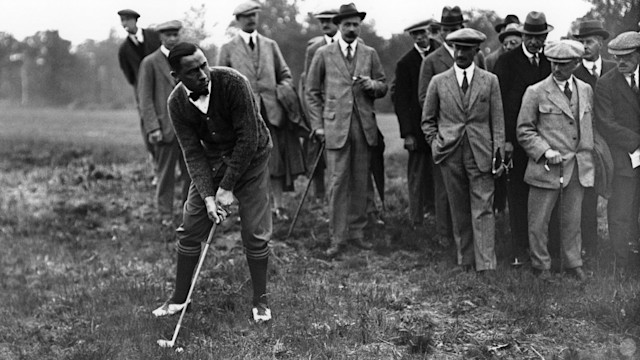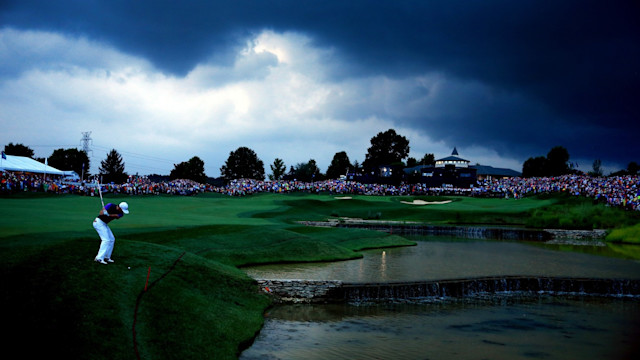Category - Major Events
That One Time the Wanamaker Trophy Went Missing
By David Mackesey
Published on
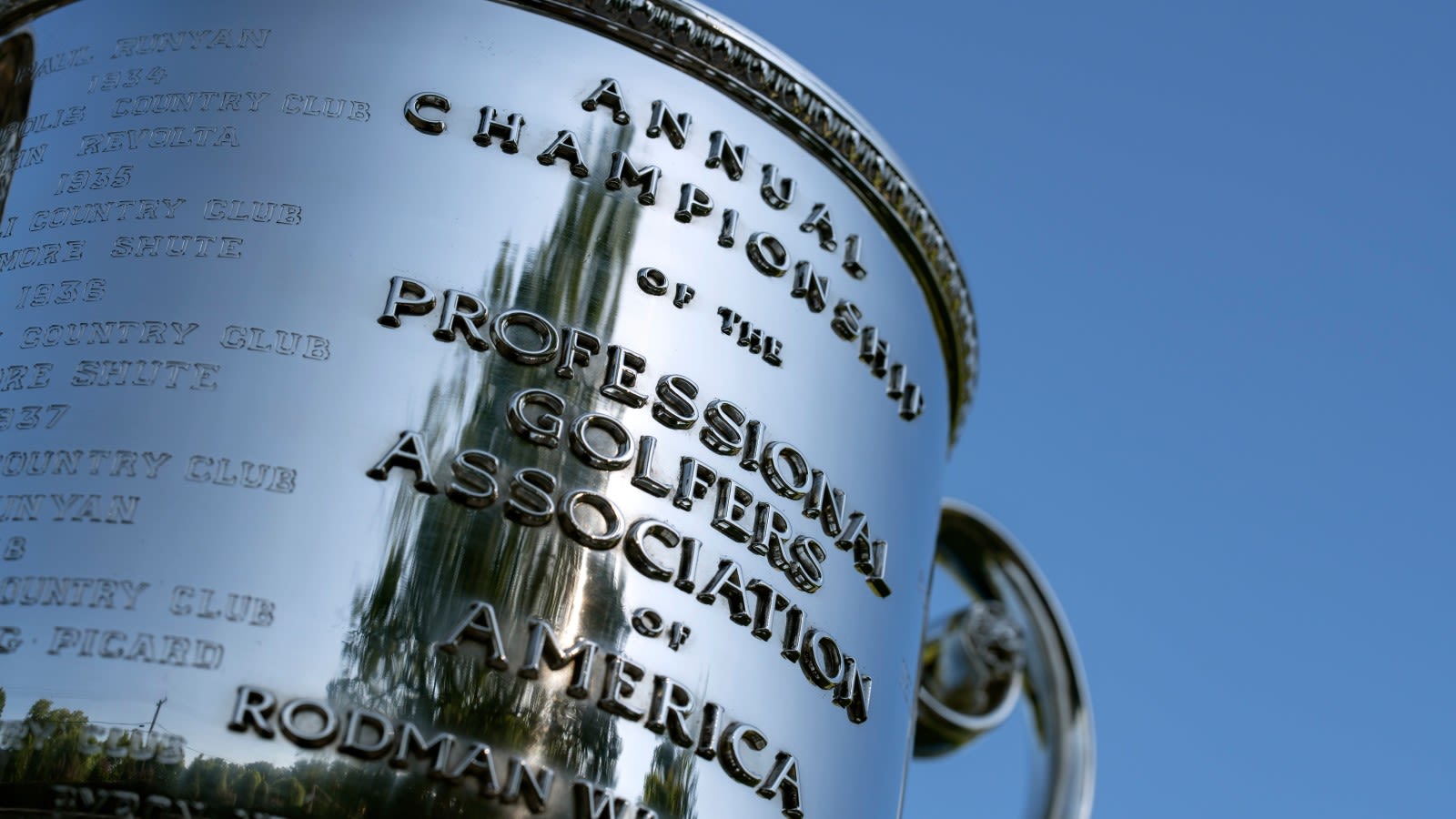
Lewis Rodman Wanamaker, son of American merchant legend John Wanamaker, believed that establishing the country’s first all-professional golf association came with making a statement.
When he donated the namesake trophy for the inaugural PGA Championship in 1916, he couldn’t be blamed that the creation of one of the largest award pieces in sports was a tremendous burden for someone caring for its welfare.
Whether on a long train ride, in a hotel, or on the fireplace mantel of a champion’s home, possession of the trophy was both the winner’s honor and responsibility. Wanamaker certainly never contemplated that the confident, yet cavalier, Walter Hagen might someday endanger his sterling silver trophy.
The dawn of the PGA Championship
The 1920s marked an era when golf professionals rose in public stature and acclaim. Names such as Hagen, Sarazen, and Armour made headlines not only for their talent as winners of major championships, but also for their flair and personal style, both on and off the golf course.
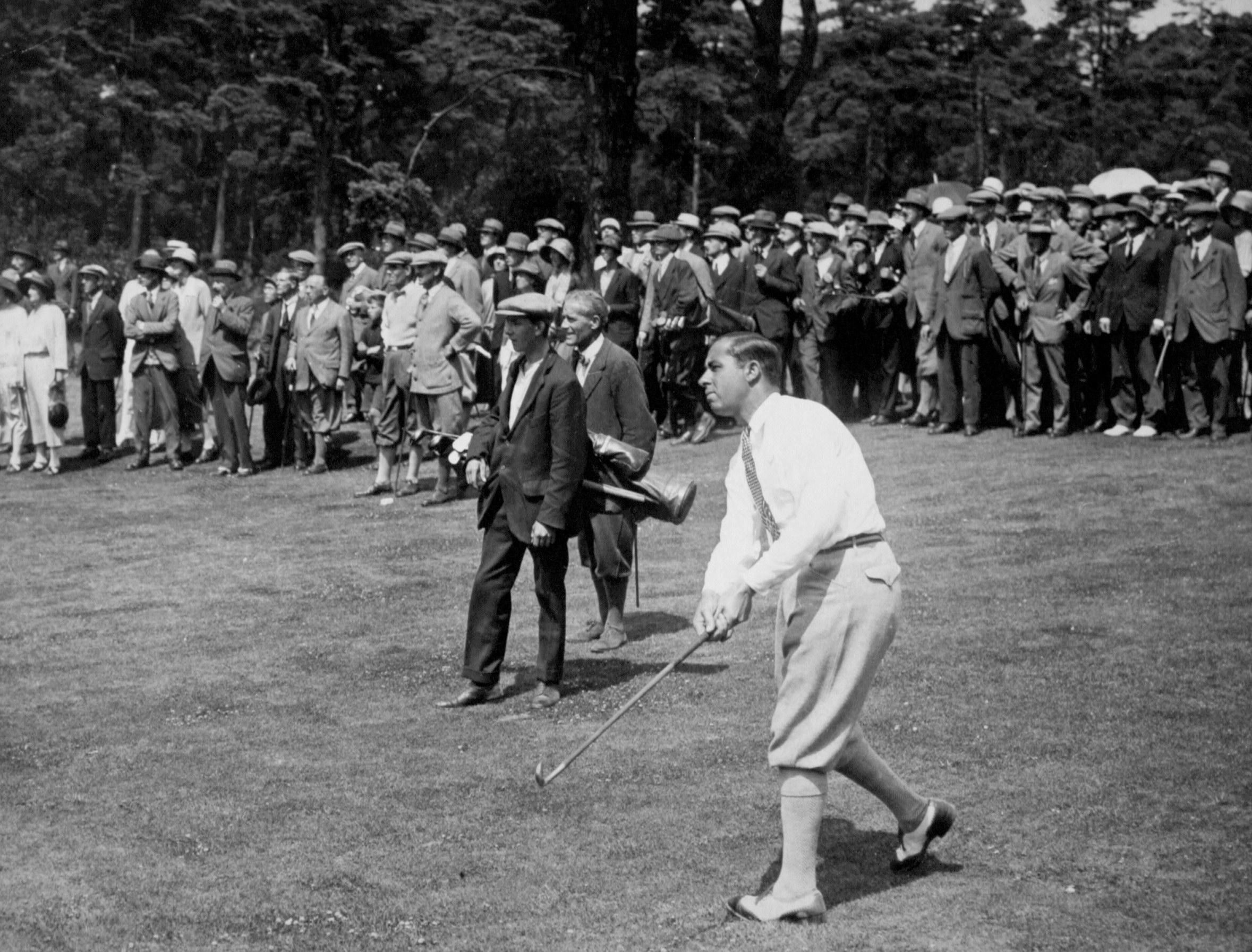
Walter Hagen. (Getty Images)
Newspapers rushed to cover these sportsmen, sending photographers to capture golf action for the next day’s edition and — always — to bring back to the newsroom a photo of the winner’s ceremony. Tournament champions valued these photos, to see themselves in the news and as a way to memorialize their achievement in an Associated Press wire photo, sent nationwide, showing a tournament trophy in hand, such as the Wanamaker.
Designed by Dieges & Clust in New York City, the Rodman Wanamaker Trophy was intended to be unique by its namesake’s standards. The company would add further luster to its product line by creating the Heisman Trophy in 1934.
The Wanamaker silverpiece features a finial (knob) resembling a cluster of grapes tugging to a vine and leaves spread about the lid that may be the artist’s “fruit of victory.” Wanamaker had stipulated in January 1916 that the PGA Championship resembled the popular News of the World Tournament in the United Kingdom, a match-play event.
Nearing sunset on Saturday, September 26, 1925 . . .
Walter Hagen won his third PGA Championship in a five-year period, this time at Olympia Fields Country Club near Chicago. It was a rewarding finish to a long week, which began with a 36-hole qualifying round, followed by five days of grueling 36-hole match play, against the best professional golfers in America. In the award ceremony, Hagen posed for the cameras, a big smile as ever, holding the trophy he had brought with him from his victory the year before.

September 26, 1925 - Walter Hagen receives back the Wanamaker Trophy from Olympia Fields President Charles Smalley as Vice President Albert M. Saxe looks on.
As the week ended, another was beginning. Hagen and golf trick shot artist Joe Kirkwood were booked for two weeks of exhibition matches, with the first match scheduled to begin in less than 24 hours at Sunnyside Country Club in Waterloo, Iowa. Squeezing in a victory celebration may have been a problem for lesser men, but not for Walter Hagen.
Wasting no time, the popular and uncontested king of professional golf chose to hold court with fellow golfers and patronize the best drinking establishments the Windy City had to offer.
The 27-pound Wanamaker, however, was just too heavy to haul around on such a night. Hagen’s solution was to hail a nearby taxi, place the trophy comfortably in the back seat, and tell the driver to deliver it to his cottage. He sealed the arrangement with a $5 bill.
A brilliant move . . . or so it seemed.
As the festivities continued into the early morning, the Iowa exhibition — now beginning in less than 12 hours — had seemed like easy money when planned a few weeks earlier. But on this Sunday morning, that logic escaped Hagen and his entourage.
Hagen was notorious for being tardy, and Kirkwood playfully nicknamed him “the late Walter Hagen.” With Sunnyside expecting as many as 1,000 spectators, the club announced in the press a step to assure golf fans of the major champion’s appearance: “Bill Bathie, Sunnyside golf professional, will accompany Hagen here from the big tournament.”
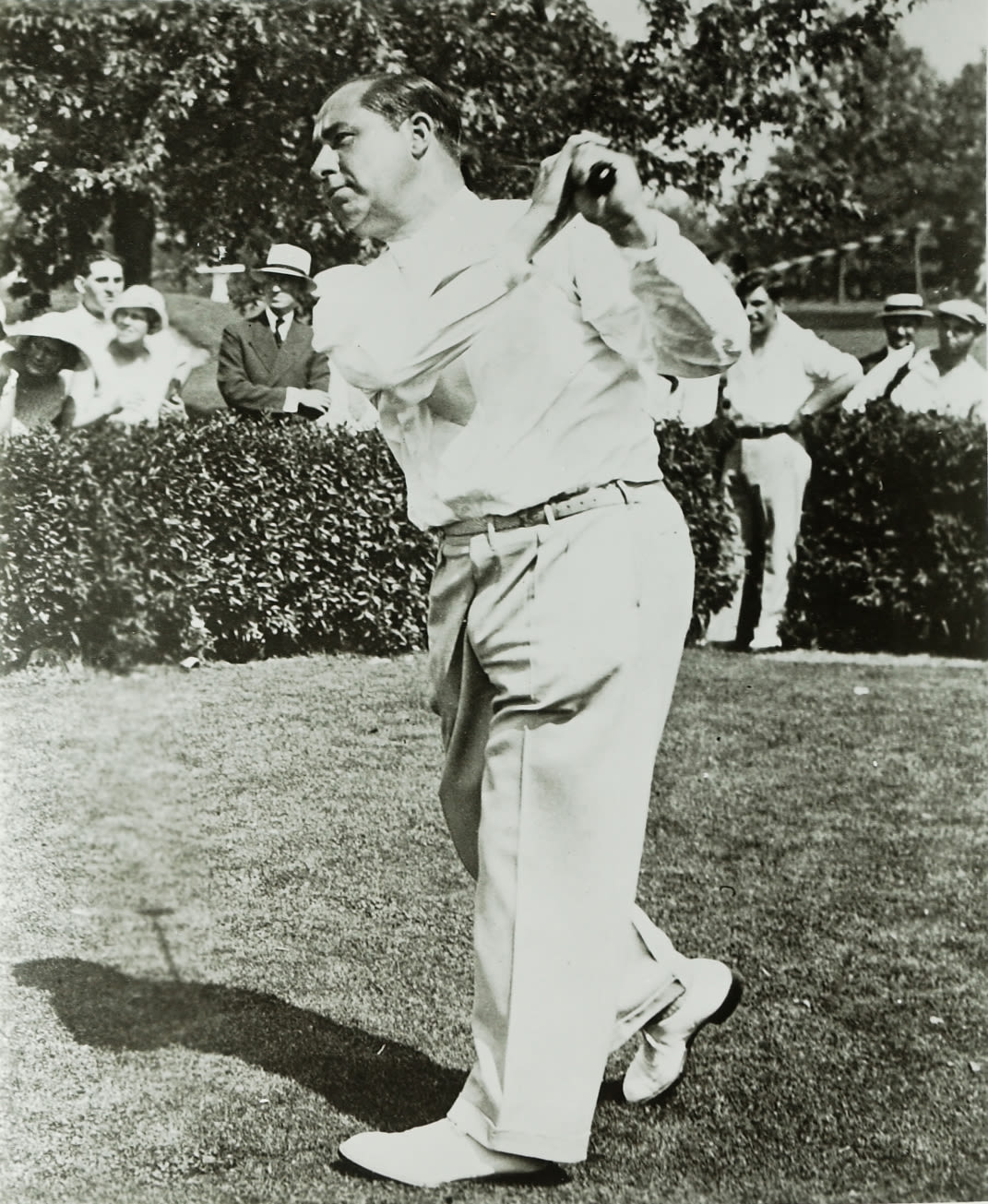
Walter Hagen.
Early the next morning, Bathie collected Hagen and Kirkwood. As the group traveled to Waterloo, a dark mood swept over Hagen because he knew — and only he knew — the Wanamaker Trophy had not been delivered to his cottage the night before and was missing.
The men arrived in Waterloo on time; the exhibition went as planned; Hagen pocketed his $250 appearance check; and he and Kirkwood headed towards Kansas City for their next engagement.
SEPT. 21, 1926: Salisbury Golf Club, East Meadow, New York
When Hagen arrived at the 1926 PGA Championship, tournament officials asked about the trophy, and with typical bravado, Hagen remarked:
“I will win it anyway, so I didn’t bring it.”
Even if they were irritated, officials had to admit he was probably right. After all, that was Walter, ever the showman. Over the next six days, Hagen played like a man determined to hide a terrible secret, as much as to defend his title. One slip, one loss would expose the embarrassing truth.
Playing brilliantly, Hagen withstood the pressure and won five straight matches for his third PGA title in a row. He became the first PGA Champion with a winner’s ceremonial photograph that did not include the Wanamaker. Hagen’s secret continued for another year.
OCT. 31, 1927: Cedar Crest Country Club, Dallas, Texas
The 1927 PGA Championship was a repeat performance for Hagen. He earned medalist honors, won five straight matches to win the championship and pocketed a $1,000 winner’s check. For the second year in a row, the Wanamaker Trophy did not appear in tournament photos.
Hagen’s victory that day was another milestone. No golfer has ever won four major championships in a row without interruption for war or any other reason.
OCT. 1, 1928: Baltimore Country Club at Five Farms, Lutherville, Maryland
For three years, Hagen had lived with the secret of the lost Wanamaker. As another PGA Championship began, he arrived each morning to play with the hunger of a lion eyeing its prey.
By Oct. 4, eight players remained in contention, and Hagen was matched with Leo Diegel in the quarterfinals. They had met often before, and the matches were among the toughest of Hagen’s career. In 1925, Hagen was down two holes with two to play and came back to tie after 36 holes, then needed 40 holes to close out Diegel.
In 1926, Hagen defeated Diegel in the finals 4 & 3. But now, Hagen was riding a five-year, 22-match winning streak, the last 12 of them burdened with the knowledge of the missing Wanamaker.
Hagen and Diegel’s duel reached the 35th hole. Diegel faced a 12-foot birdie putt, and Hagen was 10 feet away.
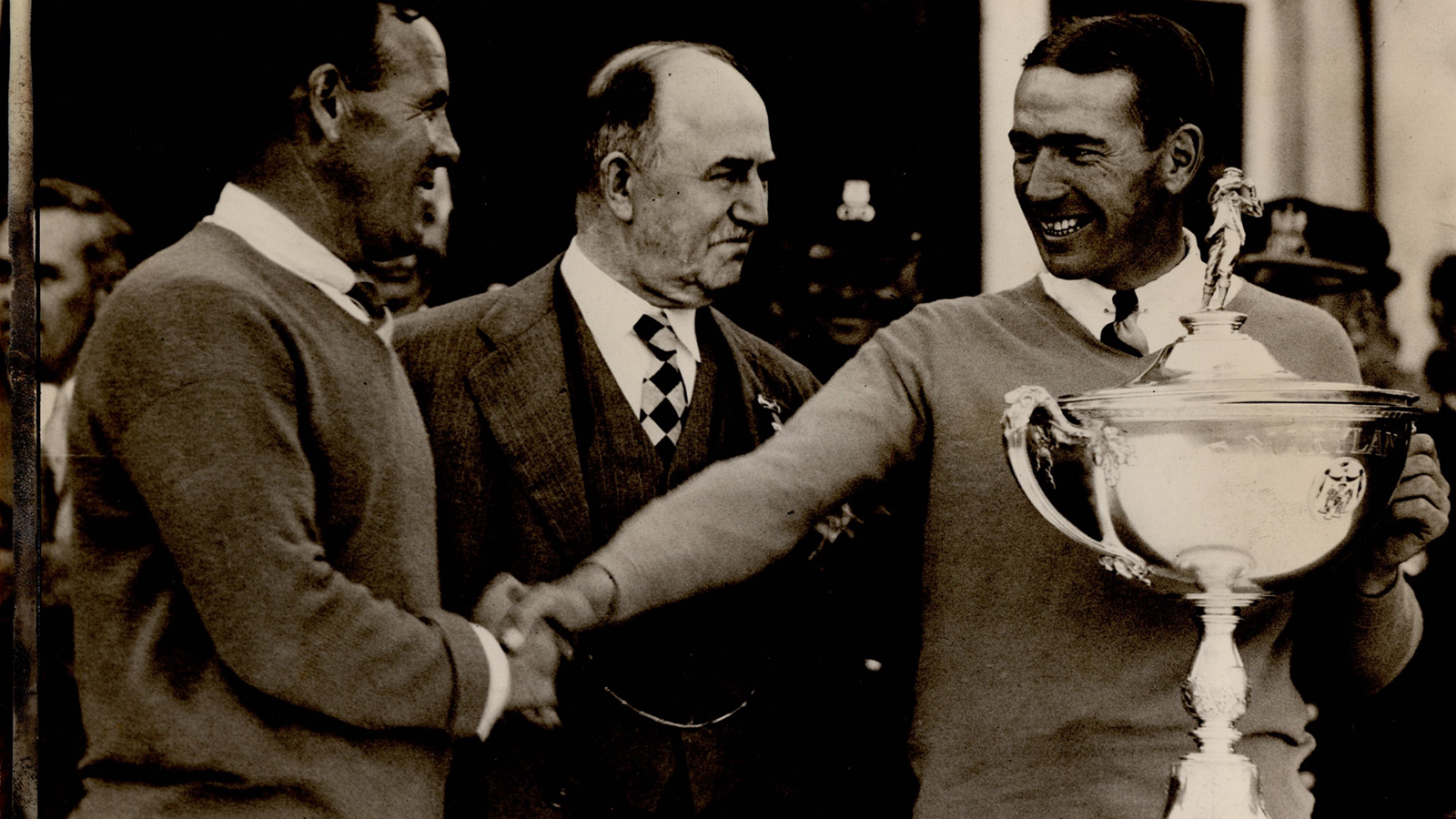
Left to right: Al Espinosa (runner-up), Broening (Baltimore Mayor) and Leo Diegel (1928 PGA Champion) holding the stand-in Maryland Cup Trophy.
Diegel took aim, struck his ball true, and the ball found the bottom of the cup. Walter had one more chance to prolong the match and to keep his Wanamaker secret. His putt ran just wide, and loud cheers echoed over the nearby fairways. Hagen shook his head and came forward like a true sportsman to give his conqueror a hearty handshake.
As they walked back to the clubhouse, Hagen began to accept the reality he was going to have to break the news to the PGA.
In the semifinals, Diegel trounced Gene Sarazen 9 & 8, then handled Al Espinosa 6 & 5 in the finals. He was a PGA Champion at last.
Hagen’s day of reckoning was upon him, and he stepped forward to admit he had lost the Wanamaker three years before, mumbling something about a taxi ride gone wrong. This did not sit well with William Broening, the mayor of Baltimore, who was scheduled to conduct the awards ceremony at 4 p.m., and was not to be denied a proper picture with the golf champion.
As luck would have it, the large and distinctive Maryland Cup Trophy was just steps away, prominently displayed in the Baltimore Country Club lobby. It certainly would do the trick as a stand-in trophy for Mayor Broening. With forced smiles all around, a mayor’s handshake, and the winner’s check to Diegel, the ceremony was awkward, but then over.
Diegel’s frustration at not having a trophy at the ceremony, which he vented to reporters, was only matched by what PGA officials were experiencing with the missing silverpiece.
Realizing its next step, the PGA engaged R. Wallace and Sons, Wallingford, Connecticut, to produce a new trophy, one that would take the place of the lost Wanamaker. There were two requirements: complete the trophy in time for the 1929 PGA Championship and engrave Leo Diegel’s name on it.
DEC. 7, 1929: Hillcrest Country Club, Los Angeles, California
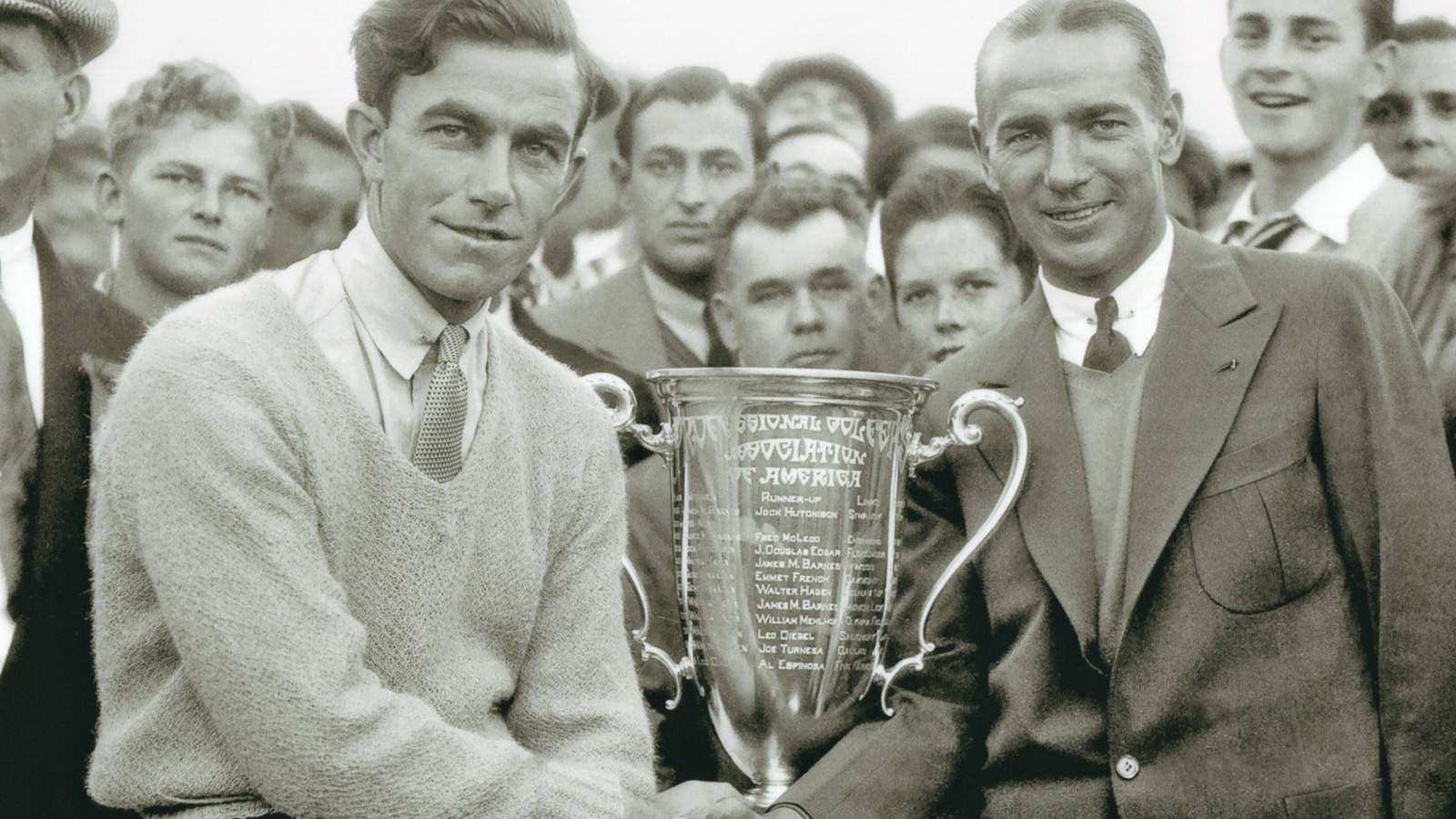
Johnny Farrell and 1929 PGA Champion Leo Diegel posing for the first time with the new PGA Championship trophy.
Leo Diegel arrived ready to defend his title as America’s top professional golfer, and did not have the privilege to display the championship trophy he earned a year earlier. His path to the championship again went through Walter Hagen and Gene Sarazen.
Both matches ended 3 & 2 in Diegel’s favor, leaving 1928 U.S. Open Champion Johnny Farrell as his foe in the finals. Up by one hole on the 27th green, Diegel’s second putt slipped just past the cup and partially stymied Farrell. To make this putt and win the hole, Farrell’s aggressive roll went slightly off line and struck Diegel’s ball, knocking that ball into the cup, and winning the hole for Diegel.
In those days, a stymie was not a rare occurrence, but hitting an opponent’s ball into the cup was very rare. But not so rare that it happened again on the very next hole when Farrell bumped Diegel’s ball into the hole for a 3-up margin.
Farrell was on his heels and Diegel cruised in for the win. Diegel quipped, “I’m just a very lucky boy. Johnny putted for me a couple of times, and I guess that won the match.”
For the first time since 1925, a ceremonial photo took place, not with the Wanamaker, but with the shiny new PGA trophy R. Wallace and Sons had crafted. At last, Diegel could flash a winning smile and wrap his arms around a PGA Champion’s trophy.
SEPT. 8, 1930: Fresh Meadow Country Club, Flushing, Queens, New York
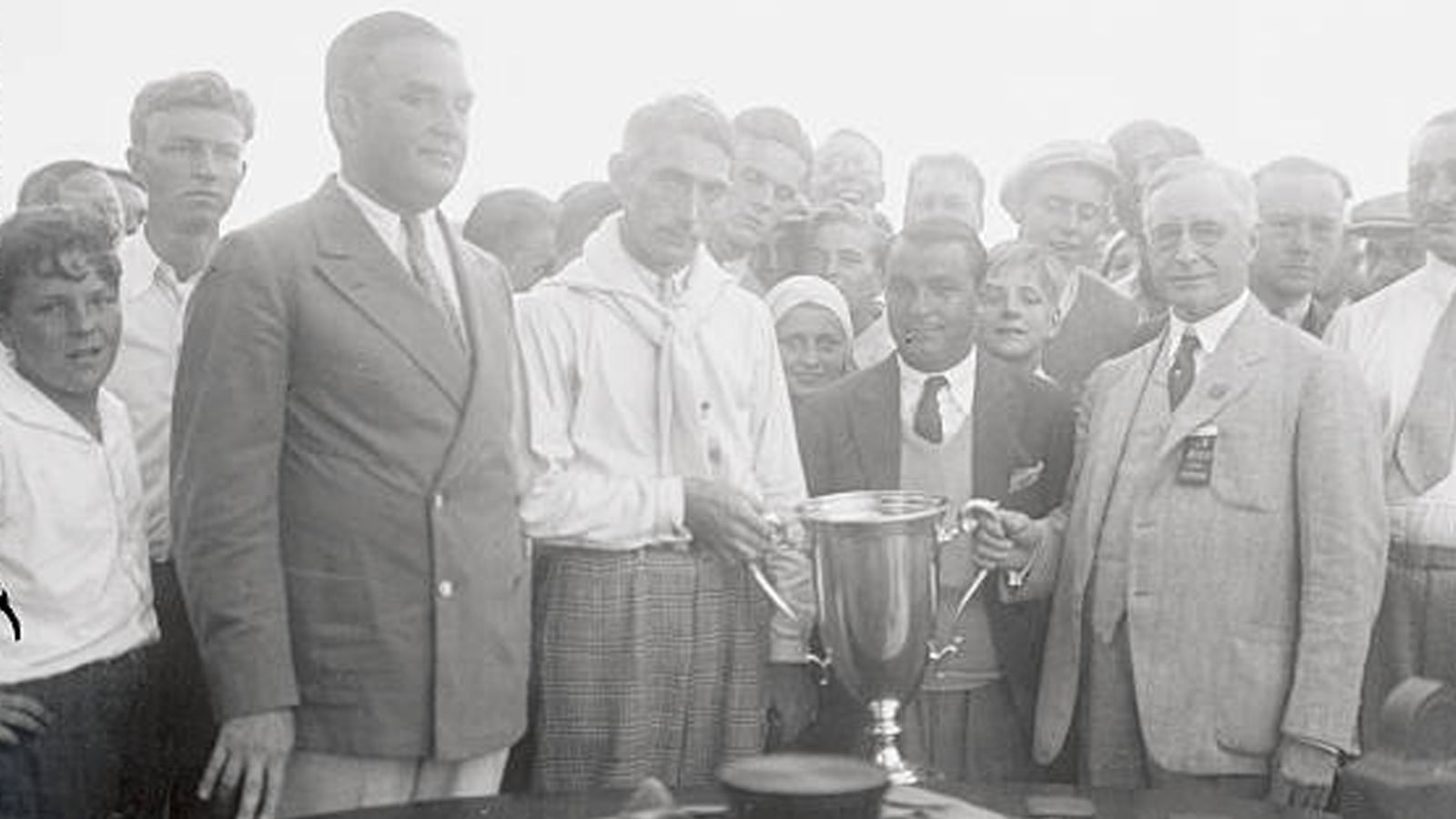
Left to right: 1930 Champion Tommy Armour, runner-up Gene Sarazen and PGA Business Manager A.W. Gates with the PGA Championship trophy.
Leo Diegel cared for the PGA trophy like a firstborn child. For the first time in half a decade, a PGA Champion would savor the traditional and very special moment of being greeted upon his arrival to defend his title, to lift the trophy from his car, and to hand it to the tournament committee for safekeeping until being awarded again later in the week.
Diegel breezed through his first-round match, but lost a hard fought 39-hole duel in the second round to Harold Sampson, a 118-pound former Claremont Country Club caddie.
Legends Gene Sarazen and Tommy Armour prevailed in the upper and lower brackets, winning four straight matches. With Diegel named the official referee, 4,000 spectators watched the final match deadlocked after 35 holes. On the 18th green, both balls appeared equidistant from the hole, calling for a measurement by Diegel. Armour lay just over 14 feet away, Sarazen just under 14 feet, Armour would putt first, with Diegel tending the flag.
As Armour was about to strike his putt, a camera clicked. He stopped, lined the putt up again, and then sent his ball directly towards the cup. In the last revolution, it dropped. Sarazen’s putt missed by one inch to the side of the cup, and Armour was the 1930 Champion. Armour would be the last European-born PGA Champion until Ireland’s Padraig Harrington in 2004.
In the award ceremony that included Sarazen, Fresh Meadow President Benjamin Ribman, PGA Business Manager A. W. Gates, the PGA proudly awarded its Perpetual Championship Trophy to Armour.
SEPT. 9, 1931: Wannamoisett Country Club, Rumford, Rhode Island
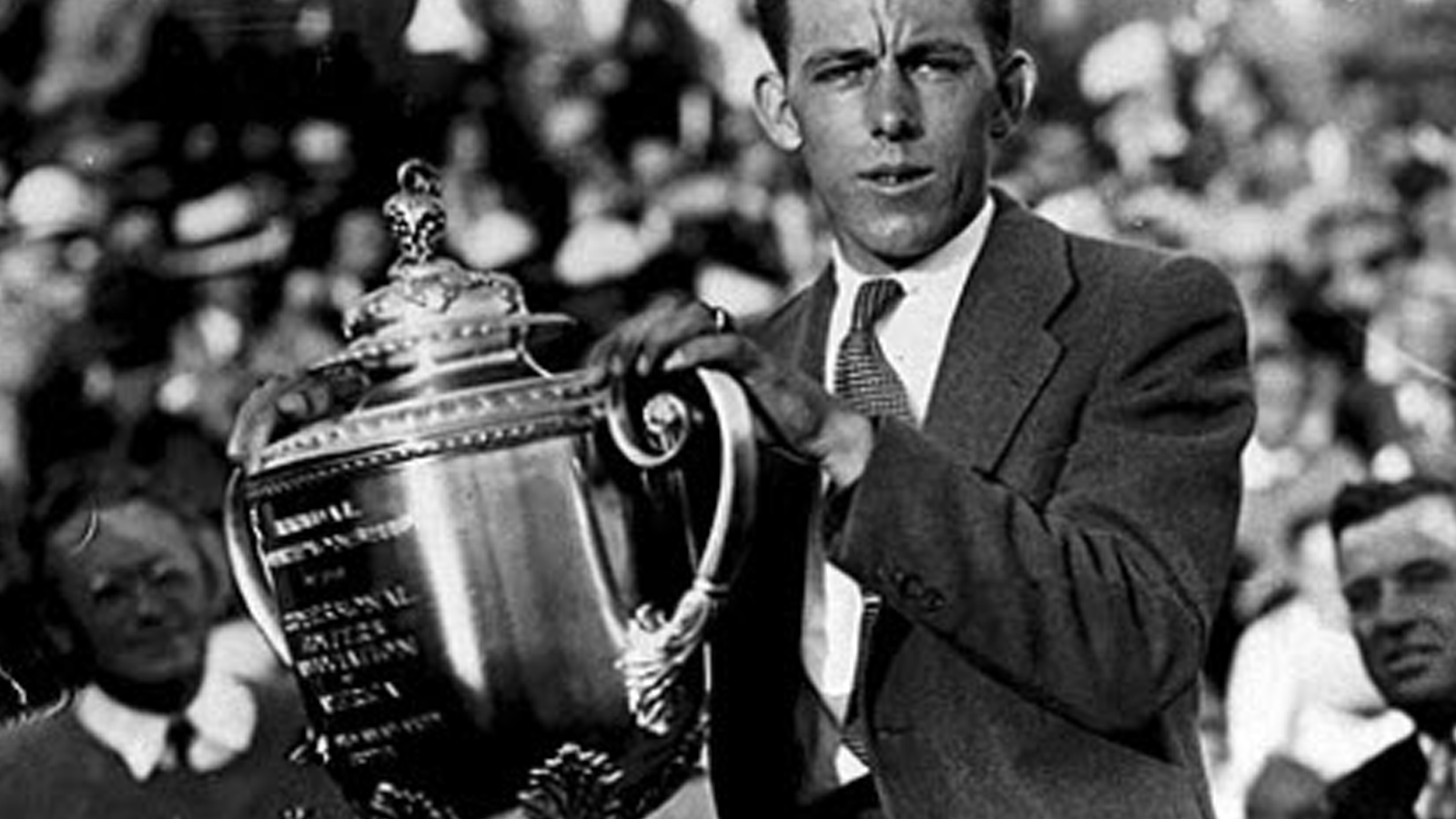
1931 PGA Champion Tom Creavy holding the Rodman Wanamaker trophy in a winner’s ceremony for the first time since 1925.
A delivery man knocked on the entry door at the Wannamoisett Country Club to place inside the lobby a large package, which had been transported from New York and not bearing the sender’s address. Tucked inside was the lost Wanamaker Trophy.
Five days before the start of the 1931 PGA Championship, the United Press International newswire carried the revelation:
“The Original Rodman Wanamaker Trophy . . . Turned Up Again Today As Mysteriously As It Disappeared Six Years Ago.”
A press release announced the stunning and wonderful news:
“OFFICIALS OF THE WANNAMOISETT COUNTRY CLUB…ANNOUNCED THE WANAMAKER WOULD BE PRESENTED TO THE WINNER OF THE TOURNAMENT, AND THE CUP THAT WAS SUBSTITUTED FOR IT WHEN IT DISAPPEARED WOULD BE KNOWN AS THE ALEX SMITH MEMORIAL CUP AND WOULD BE GIVEN AS A MEDAL PRIZE IN THE QUALIFYING ROUND.”
Just when the recovered trophy was discovered has never been attributed in print, it still has its own legendary status in one form.
In a Oct. 29, 1931 Associated Press photo, the first image of the recovered trophy appears with PGA Business Manager Gates.
The AP further enhanced the story in April 22, 1931, attributing its “news” anonymously to “one of the Florida golfing scribes" who wrote, “This fall, when a porter was cleaning up the golf factory in Detroit, which makes the Hagen equipment, he found an unopened sealed package. In it was the cup. Just how it arrived in the factory basement still remains a mystery.”
The factory was owned by L.A. Young & Company, which had purchased the Walter Hagen Golf Products Corporation in 1925.
Coincidentally, the PGA of America was planning a memorial medal in honor of professional golf pioneer Alex Smith, who passed away in April 1930.
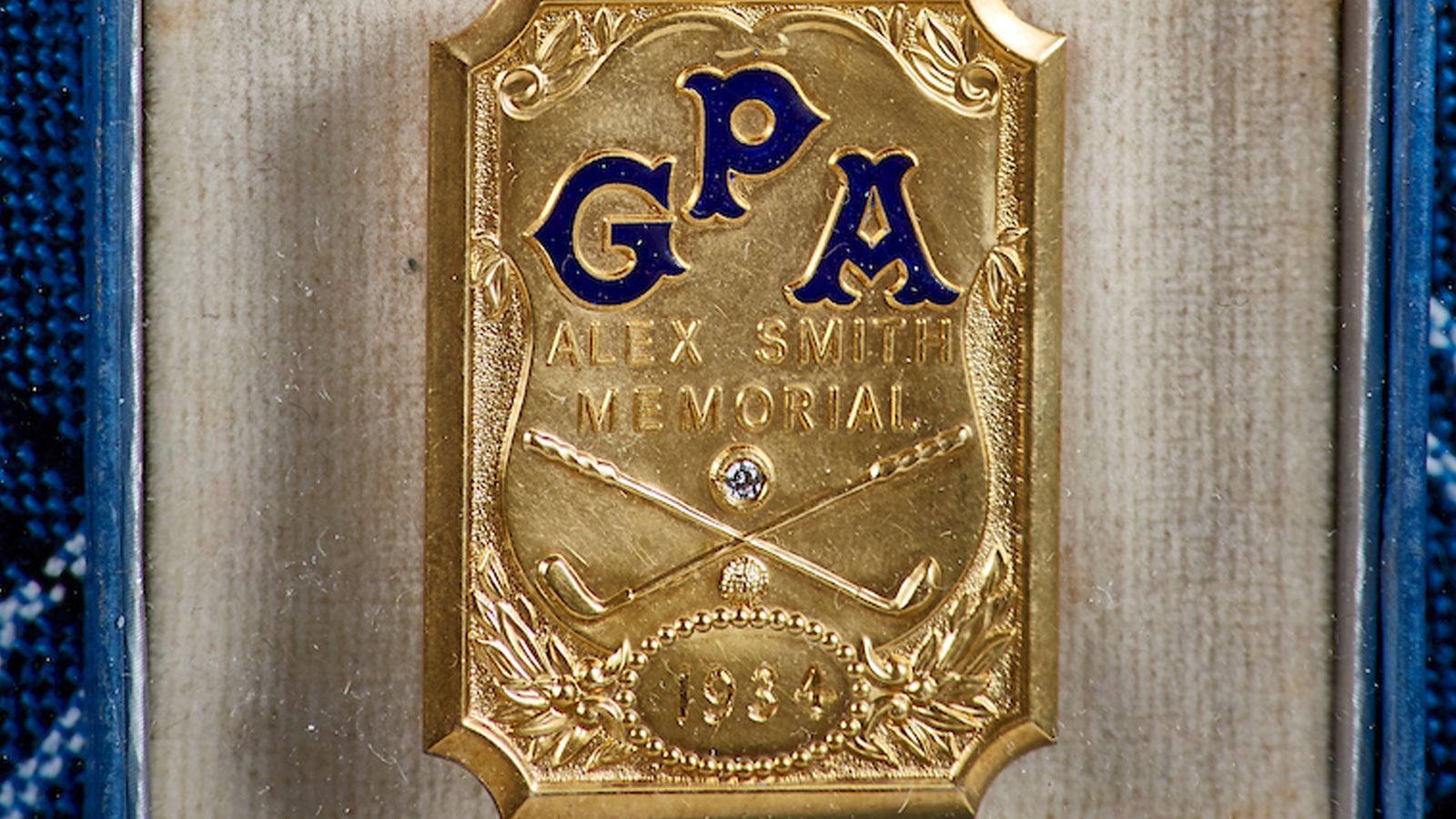
1934 Alex Smith Memorial Medal. One of eight created and gifted to the PGA and pre-dated 1931-1938.
Smith’s Scottish heritage was at the core of the Association’s roots. In fact, 28 of the 35 PGA Charter Members — those who attended a Jan. 17, 1916 organizing luncheon at Wanamaker’s Store in New York City — were born outside the United States.
A two-time U.S. Open Champion, Smith was not among the Charter Members, but he had already established himself on both sides of the Atlantic by his golf prowess, and was beloved more for his wit, charm, teaching ability, and no-nonsense approach to all things in life. He was famous for telling nervous golfers standing too long over a putt, “If you’re going to miss ‘em, miss ‘em quick.”
For the PGA, honoring Smith renewed memories of a contested issue from earlier days. While one of the PGA’s original 78 members elected in April 1916, he had publicly advocated his preference for stroke over match play. Smith believed the truest opponent for any professional golfer is the golf course itself, and whoever conquered her was the champion. Match play was entertaining and enjoyable for spectators, and more well suited for the skill of amateurs or for exhibitions.
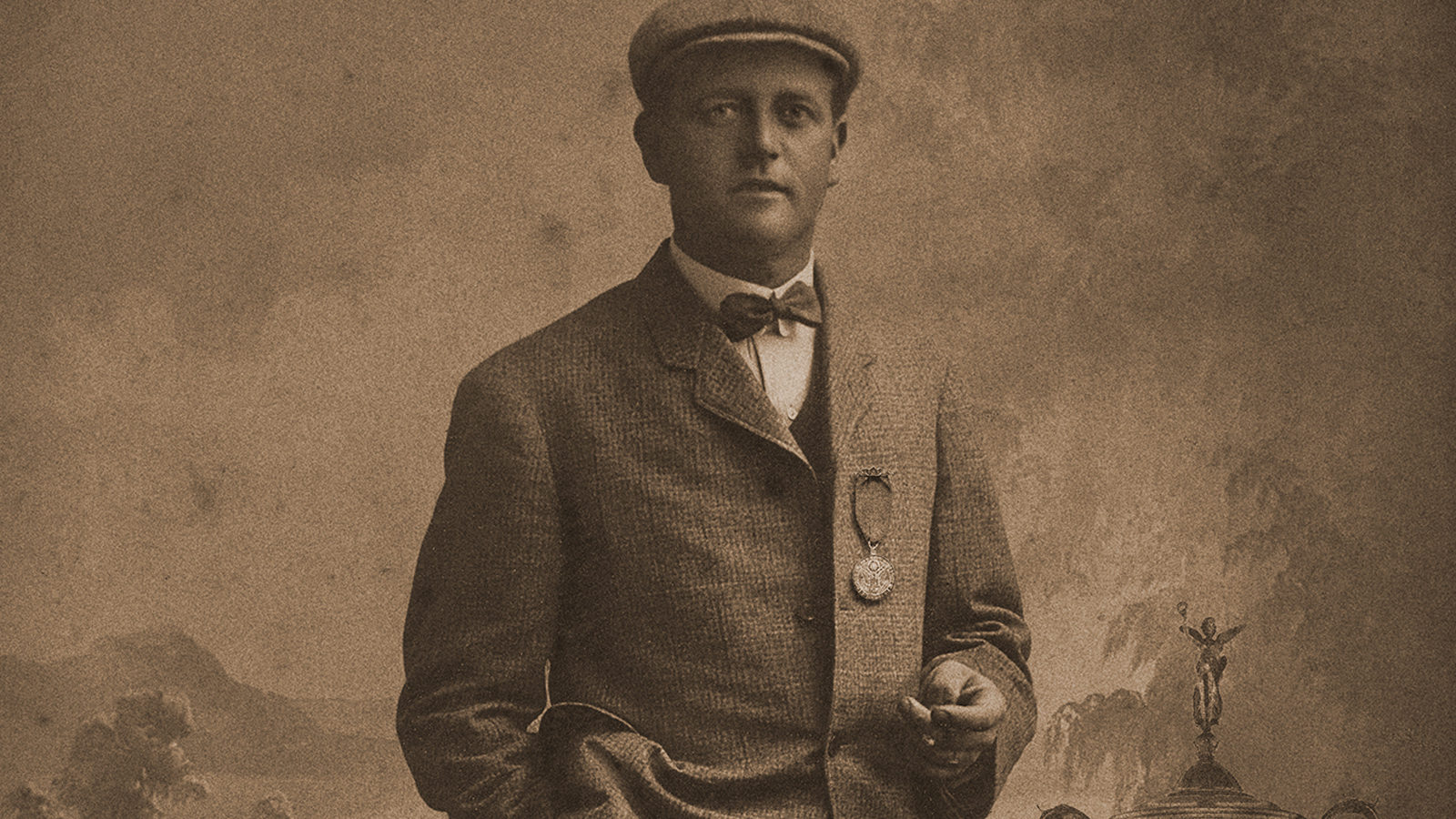
Alex Smith.
Smith’s fans were many and powerful, including John McEntee Bowman, founder of Biltmore Hotels, and Henry Topping, industrialist and future family owner of the New York Yankees. PGA of America President Alex Pirie and Metropolitan PGA President John Inglis led the charge to create the Alex Smith Memorial Medals. Inglis was mentored by Smith from a young age, and honoring Alex was deeply personal to him.
The first eight gold medals were created and presented. The PGA agreed; the memorial medals were approved, and then added the trophy with the lower portion re-engraved from PGA Champions to Medalists.
With the drama of lost and found trophies settled, Gene Sarazen carried the day in qualifying as medalist and became the first winner of the Alex Smith Memorial medal — and thanks to Walter — the man who weathered perhaps the biggest mulligan in major championship history off the course — his name on a transformed trophy as well.
Five days later, 20-year-old newcomer Tom Creavy won the PGA Championship, the $1,000 purse, the gold medal, and for the first time since 1925, possession of the Rodman Wanamaker Trophy.
The next year, Olin Dutra earned medalist honors and won the PGA Championship. He became the first golfer to possess both the Wanamaker and Alex Smith trophies in the same year.
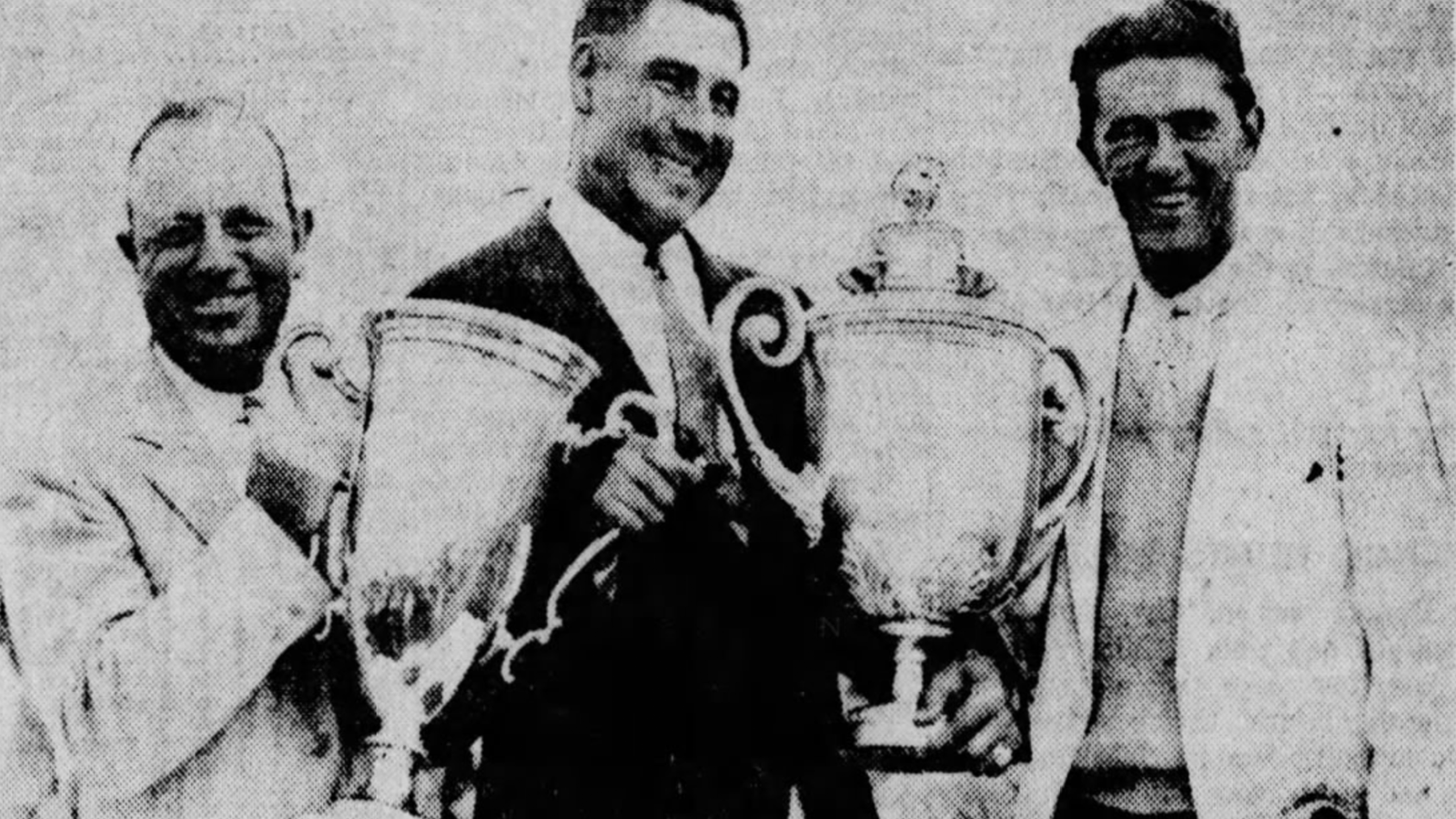
Left to right: PGA President Charley Hall, 1932 PGA Medalist and Champion Olin Dutra and runner-up Frank Walsh. Dutra was the first to hold the Wanamaker and Alex Smith trophies in the same ceremony.
In 1935, Walter Hagen was medalist, earned possession of the Alex Smith Memorial Trophy, and tongue in cheek, the PGA collectively held its breath. He properly returned it the next year without incident.
Over the next 25 years, the Alex Smith trophy was engraved with a “Who’s Who” of professional golf, including Sarazen, Hagen, both Olin and Mortie Dutra, Ben Hogan, Byron Nelson three times, twice each for Sam Snead and Dutch Harrison, Harry Cooper, Jim Ferrier and Lloyd Mangrum.
In 1956, the 40-year tradition of a grueling championship week, combining a Monday/Tuesday qualifying on the very same course as the Wednesday-Saturday match play finals, was replaced by advanced regional qualifying. With that, the Alex Smith Memorial Trophy was retired.
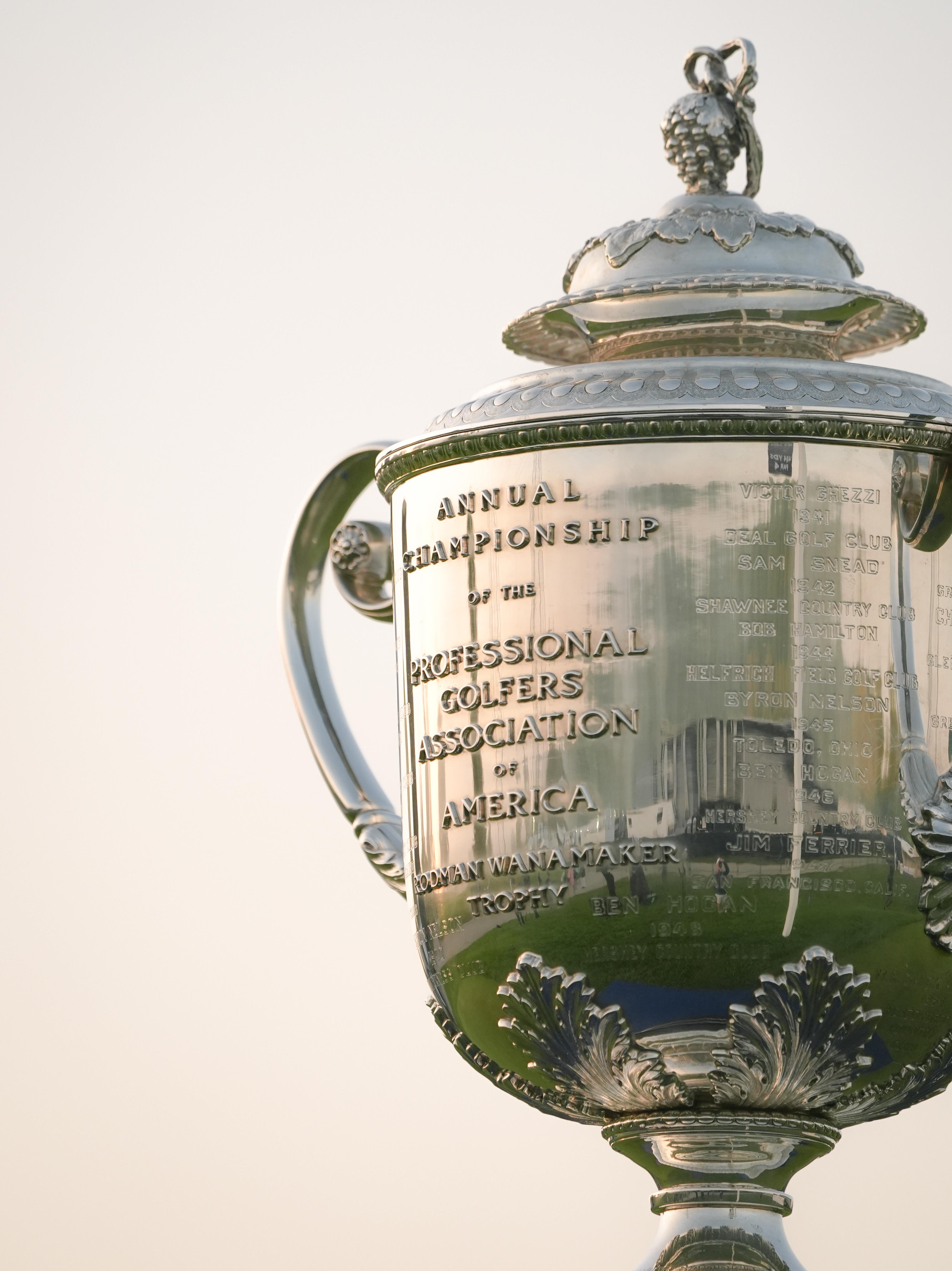
In 1958, with the advent of television to expand worldwide coverage, Llanerch Country Club outside Philadelphia became the first PGA Championship conducted at stroke play — a tradition continued to this day.
David Mackesey is the Club Historian for Carnoustie Golf Club in Scotland and The Club at Lac La Belle in Wisconsin. PGA Historian Emeritus Bob Denney contributed to this story.
